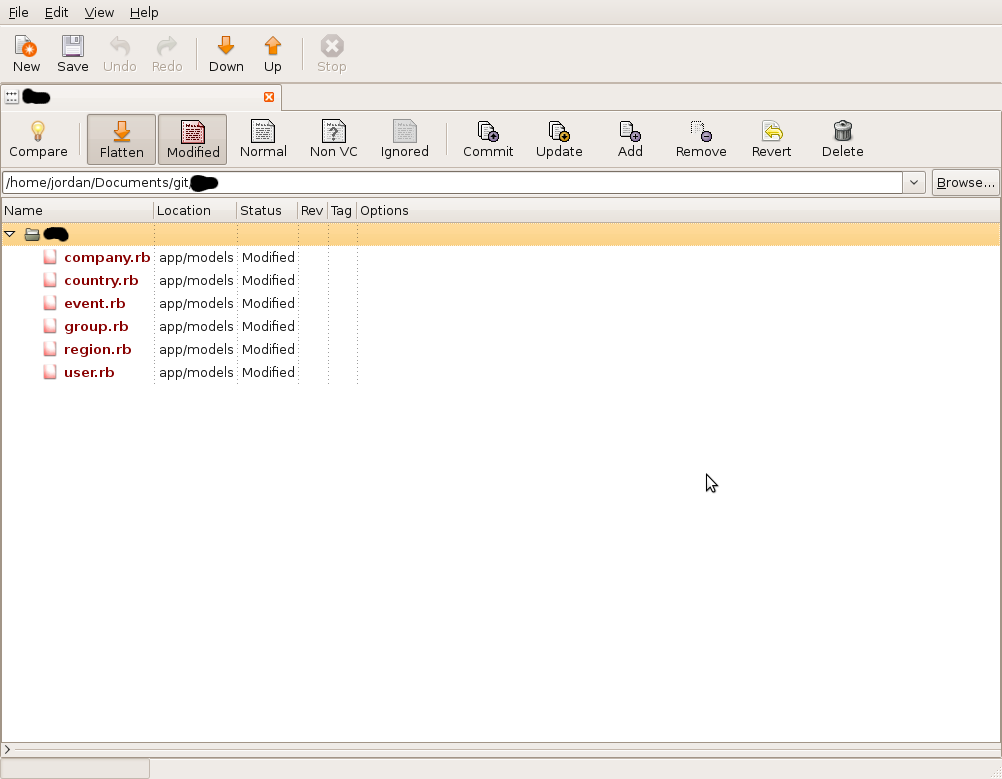

- #How to install meld how to#
- #How to install meld manual#
- #How to install meld code#
- #How to install meld windows#
Just insert your cursor as you normally would and begin typing.Ĥ. Finally, you can type directly into your document. Click the upward-facing arrow to insert a line above a unique line or the downward-facing arrow to insert a line below.ģ. If you hold down the Control key, you’ll see the arrows from the last step turn into diagonal pairs. Lines can also be inserted into documents without overwriting. Clicking the arrow on the left side, for example, will use the left-hand document’s line to overwrite the right-hand document.Ģ. To copy changes from one file to another, click the small black arrows between the changes. Meld will continue to analyze the document for changes as you modify either version, and you can press “Control + Z” at any time to undo changes.ġ. In addition to making comparisons, Meld allows you to change compared files. You can also click directly in the document with your mouse. To navigate between differences, click the up and down buttons in the menu bar. A green background indicates that a line exists in one file but not in the other.Ĩ. Red characters are differences, and the blue background indicates that there is a difference in that line. The next window summarizes any differences found between two files.
#How to install meld manual#
The main difference to manual deletion of Meld’s folder - if.

Meld entry in Programs and feautures and some installer settings. It uninstalles: Meld’s application folder (similar to the ine you mentioned) Meld shortcut from start menu.
#How to install meld windows#
This cmd (using 3 dots) is the equivalent of To remove a system-wide installed meld - a standard windows Programs and Features can be used. # made on this branch from the point where they last checked out Do a difftool comparison (using meld now) to see the changes # hidden branch named `origin/someone_elses_branch`) # named `someone_elses_branch` from the locally-stored remote-tracking Check out this branch locally (this creates the locally-stored branch # locally-stored,remote-tracking hidden branch named Fetch their remote changes to your local machine into your GitHub will show you the commands they recommend for checking out their branch when looking online at the PR. If this is not the case, you'll have to slightly modify the commands to check out from their forked repo instead of from your common repo.
#How to install meld code#
NB: the below commands assume their branch is in your same code repo, since you are teammates. To review someone else's GitHub PR locally on your machine, using meld Calling meld directly to compare two files: See changes you've made since your last commit (do this in place of That's it! git difftool now works on Linux Ubuntu! 3. edit your ~/.gitconfig file (gedit GUI editor will open) I might as well put the Linux instructions here too for my own reference in one place if nothing else:įor Linux it's even easier: # 1. Now call git difftool in your Git for Windows bash terminal and Meld will open up as your default difftool viewer! If you don't already know: you can open said terminal in Windows by right-clicking in a folder in Windows Explorer and going to -> "Git Bash" or whatever it's called. Path = C:\\Program Files (x86)\\Meld\\Meld.exe OR you can just edit your C:\Users\YOUR_USER_NAME\.gitconfig file directly and add the following to the end of it (notice the mandatory usage of the double-backslashes here as the path separator!): Git config -global "C:\Program Files (x86)\Meld\Meld.exe" Then, to make meld your git difftool, you can use these two commands, inside the Git for Windows bash terminal, ( as Arugin says), using the proper path to Meld.exe: git config -global merge.tool meld

Windows:ĭownload and install Git for Windows, which includes a "Git Bash" Linux-like terminal accessible via the right-click menu in any folder in Windows Explorer, once you've installed Git for Windows. (see also the screenshots of meld below): 1.
#How to install meld how to#
How to use meld as your git difftool in place of git diff Has anyone ran into this before or know how to configure Git / Meld to work correctly in Windows? Instead of opening C:\repo\roses., Meld tries to open C:\Program Files (x86)\Meld\meld\roses. For example, even though Git generates the BASE, LOCAL, and REMOTE files in the repository directory (the location I called git mergetool from), Meld tries to open each of those files in the directory of the executable. However, the paths to the files that Git writes to pass to the diff tool is incorrect. So, when I have a conflict, I do git difftool and Meld does in fact open. Path = C:\\Program Files (x86)\\Meld\\meld\\meld.exe gitconfig like so to support Meld as the default mergetool However, in Windows it has been a different story.įirst, I installed Meld from a bundle I found here: In Linux, my favorite merge tool is Meld, and I've had no problems using or configuring it to work with Git.


 0 kommentar(er)
0 kommentar(er)
